
Tourmaline: its name means "many colors", ranging from ripe watermelon-pink through the spectrum of teal, turquoise and deep forest greens.
According to ancient Egyptian legend, Tourmaline’s astonishing array of colors is evidence that the stones travelled from the earth’s heart to the sun, forming a full rainbow along the way.
This range of unusual colors, paired with the stone's remarkable brilliance and hardness, make this October birthstone a fashionista favorite year-round!
LA VIE EN ROSE
Pink Tourmaline, also called Rubellite, is the official birthstone for October, and protects those born under the sign of Libra.
Many metaphysical experts believe that this stone in its pink form is a love-magnet.
Collect or wear it to attract romantic love, and also to develop deeper acceptance of yourself.
Other traditions teach that Tourmaline in all colors offers balancing energy, specifically for creating equilibrium between the impulsive, intuitive aspects of our nature (right brain) and the rational, orderly processing (left brain). With the same reasoning, these traditions teach that Tourmaline can help balance the nurturing Feminine aspects of personality with the aggressive and independent Masculine aspects.
This explanation suggests that this stone, available in an inspiring range of shades, could be helpful for a woman seeking to become more assertive, and for a man seeking to become more receptive and sensitive.
JEWEL OF MANY COLORS
The stone was first discovered in Sri Lanka, and so our word “Tourmaline” comes from the Sinhalese word “turamali”, which loosely means “stone of various colors.”
Actually, Tourmaline is not a single mineral but a group of minerals – boron silicates—with similar properties.
It’s easy to wear at a sturdy 7 – 7.5 on the Mohs scale.
Pink Tourmaline occurs in many shades, ranging from cotton-candy pastels to neon, electric hot pinks, to raspberry jam tones to deep purple-pinks which are often mistaken for Rubies.
Lithium in the earth’s crust while the stone is forming causes the range of pink tones.
Other impurities, usually iron, titanium, chromium and manganese, give rise to other colors.
Indicolite means Blue Tourmaline; Verdelite or Chrome Tourmaline for green are among our favorites.
Red Tourmalines are more rare than Rubies. They are generally mined in Brazil, Madagascar, Nigeria and Pakistan-- and some of the most delicious, bubblegum-pink specimens were mined recently in California.
According to ancient Egyptian legend, Tourmaline’s astonishing array of colors is evidence that the stones travelled from the earth’s heart to the sun, forming a full rainbow along the way.
In addition to the fact that Tourmalines may occur in every shade, from colorless through the spectrum of pinks ranging from pastel to electric, deep, plummy reds, bright oranges and pink-infused peaches, yellows, greens, indigo, and purples ranging from smoky purple to floral pastel lilac, the stones are often pleochroic, displaying several colors within the same gem.
A favorite among Tourmaline fanciers is the aptly named “Watermelon Tourmaline” which forms concentric rings of color: deep pink in the center, icy pastel pink beyond that core, and a deep green outer layer that looks like the melon’s rind.
MISTAKEN IDENTITY
When Spanish Conquistador Francisco Spinoza’s expedition in South America discovered the first recorded green Tourmaline crystal in the 1500s, the Europeans called the gem “The Brazilian emerald.”
The gem was confused with Emeralds and Rubies for many centuries to come.
The rarest is the Paraiba Tourmaline, named for its home in Brazil. This exceptional Tourmaline radiates a vivid neon turquoise green!
PASSION FOR PINK
In the early 20th century, a powerful Asian woman created a boom for Pink Tourmaline.
A former concubine to the Emperor, her name was Cixi (aka Tzu Hsi, 1835 – 1908).
She gave birth to the Emperor’s son, and when the Emperor died in 1861, her son took the throne. This made Cixi the Empress Dowager of China’s Qing Dynasty.
When her son died, Cixi quickly installed her nephew in the royal role in order to maintain her own power, breaking the Chinese tradition of succession.
Cixi loved luxury, and wasn’t shy about accessorizing herself in imperial fashion.
Her stone of choice was the Pink Tourmaline, and a productive San Diego, CA vein mined in the pre-teen 1900s yielded a sweet-shop sized haul of the Empress Dowager’s favorite candy-colored gem.
It is estimated that 120 tons of gem-grade Pink Tourmaline were mined from Mesa Grande in San Diego County between 1902 and 1910. On her deathbed in 1908, she demanded that a gigantic Pink Tourmaline be placed upon her finger as she crossed over into eternity.
The transparent gem was carved into snuff bottles, vases and many types of royal ornamentation for Cixi.
Snuff bottles in particular were status objects, since snuff originated in the Americas, and was popular in England. Cixi admired Queen Victoria for her power, and set the standard of adopting European and colonial affectations whenever possible.
Perhaps the stone’s legendary capacity to strengthen a woman’s will and allow her to tap into her powerful masculine side should be credited for her long and fierce reign of 47 years.
Call us to consult – we’ve got a gallery of gorgeous Tourmalines ready for viewing!
Get an eyeful: a few of the Tourmalines in our current collection:
GIA Certified Natural Unheated Pink Tourmaline Cushion Cut 77.99 carats
GIA Certified Natural Green Paraiba Tourmaline Round Cut 4.10 carats
GIA Certified Natural Chrome Green Tourmaline Oval Shape 4.15 Carats
GIA Certified Natural Green Paraiba Tourmaline And Diamond Ring
GIA Certified Natural Copper Bearing Color Change Tourmaline 6.07 Carats

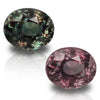 Alexandrite
Alexandrite Amethyst
Amethyst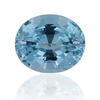 Aquamarine
Aquamarine Chrysoberyl
Chrysoberyl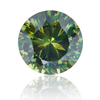 Demantoid
Demantoid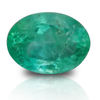 Emerald
Emerald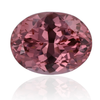 Garnet
Garnet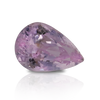 Kunzite
Kunzite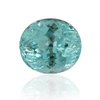 Paraiba
Paraiba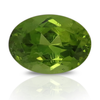 Peridot
Peridot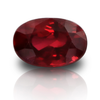 Ruby
Ruby Sapphire
Sapphire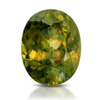 Sphene
Sphene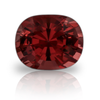 Spinel
Spinel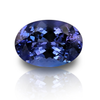 Tanzanite
Tanzanite Topaz
Topaz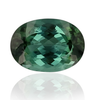 Tourmaline
Tourmaline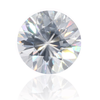 Zircon
Zircon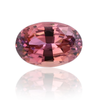 Zoisite
Zoisite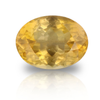 Rare Gemstones
Rare Gemstones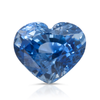 Heart Shape
Heart Shape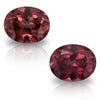 Matched Duo
Matched Duo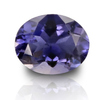 Everyday Candy
Everyday Candy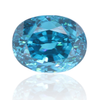 Insta Therapy
Insta Therapy Mini-Splurge
Mini-Splurge